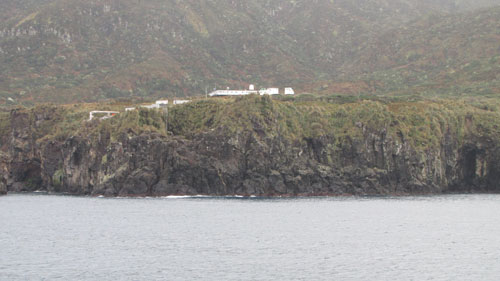The eradication of alien vertebrate species on oceanic islands is now an increasingly well-known and practiced conservation method. On islands around the world, in both hemispheres and in many seas and oceans, islands of successively increasing size and complexity are being restored to something like their original state by the active removal of introduced predators (rats, cats, pigs and mongoose), as well as of herbivores such as cattle, sheep, goats and rabbits.
Many of the islands so treated are literally "over the horizon" from mainland areas of human occupation and so the general public rarely gets to see eradication exercises in operation, and cannot always visit the treated sites to see the results for themselves. There are exceptions, notably several New Zealand offshore islands, such as post-eradication Kapiti, Tiritiri Matangi and Ulva, which are all open to the tourist, but the more oceanic islands, including those of the Southern Ocean and the North Pacific where most ACAP-listed albatrosses and petrels breed, are much harder to reach.
Keeping the concerned public "on side" is a critical part of a successful eradication, which usually includes the often-contentious use of poisons or trapping and shooting. "Rat Island" by William Stolzenberg aims to educate the public of the necessity of such seemingly drastic actions. Written in a journalistic style with somewhat emotive language at times Stolzenberg takes the reader around the world's oceans as he describes attempts to eradicate rats and the like from invaded islands.
The book comes with an index and a useful and a quite comprehensive bibliography of 43 pages. Citations go up to 2010. I tested coverage of Southern Ocean islands by searching the index for Campbell, Gough, Macquarie and Marion Islands: all places where important eradication exercises have been carried out or are planned. Campbell gets fairly detailed coverage of the 2001 rat eradication led by Pete McClelland of New Zealand's Department of Conservation. I then read a brief entry on Gough's mice which "...were rushing out of the dark to attack birds [Tristan Albatrosses Diomedea dabbenena] three hundred times their size."
Macquarie gets half a page on the cat eradication and the failed 2010 attempt, stopped by poor weather, to eradicate rodents and rabbits. The repeat attempt last year that looks to be successful has come too late to be mentioned in the book. However, the removal of feral cats from South Africa's sub-Antarctic Marion Island in the early 1990s, still the largest island from which cats have been eradicated, does not get a mention, although at least one scientific publication arising from that successful exercise is listed in the bibliography.

The South African weather base on Gough Island: home of the introduced House Mouse
Photograph by John Cooper
This is not really a book for the professional for anything other than a bit of light reading, but it can serve a good purpose as recommended reading to doubters and reluctant funders. To this aim it could have been well served by some photographs to show the devastation that introduced mammals cause on islands, as well as the beauty of the indigenous species, including albatrosses and petrels, that eradication projects help conserve.
Stolzenburg, William 2011. Rat Island. Predators in Paradise and the World's Greatest Wildlife Rescue. New York: Bloomsbury. 277 pp. ISBN 978-1-60819-103-1. USD 26.00. www.bloomsburyusa.com
John Cooper, ACAP Information Officer, 17 March 2012

 English
English  Français
Français  Español
Español